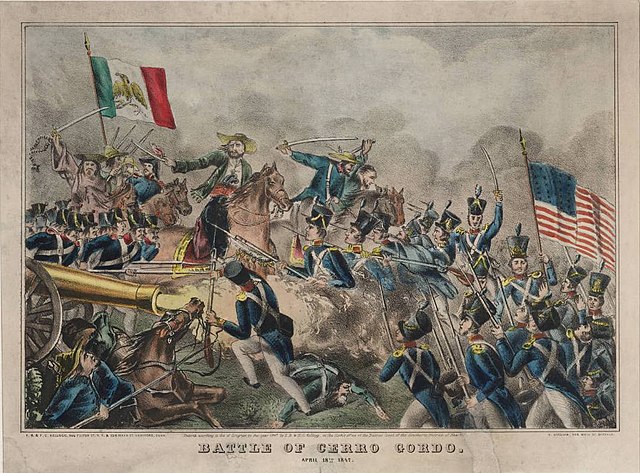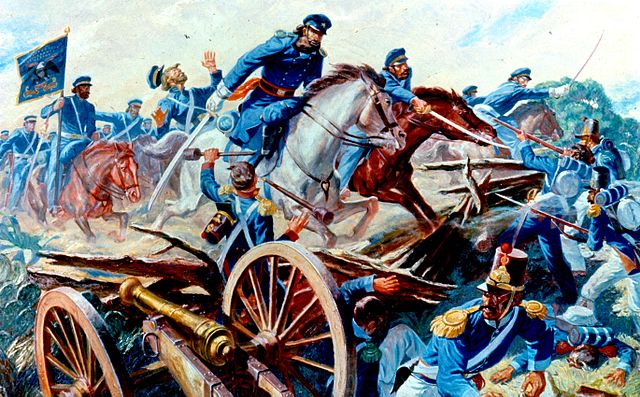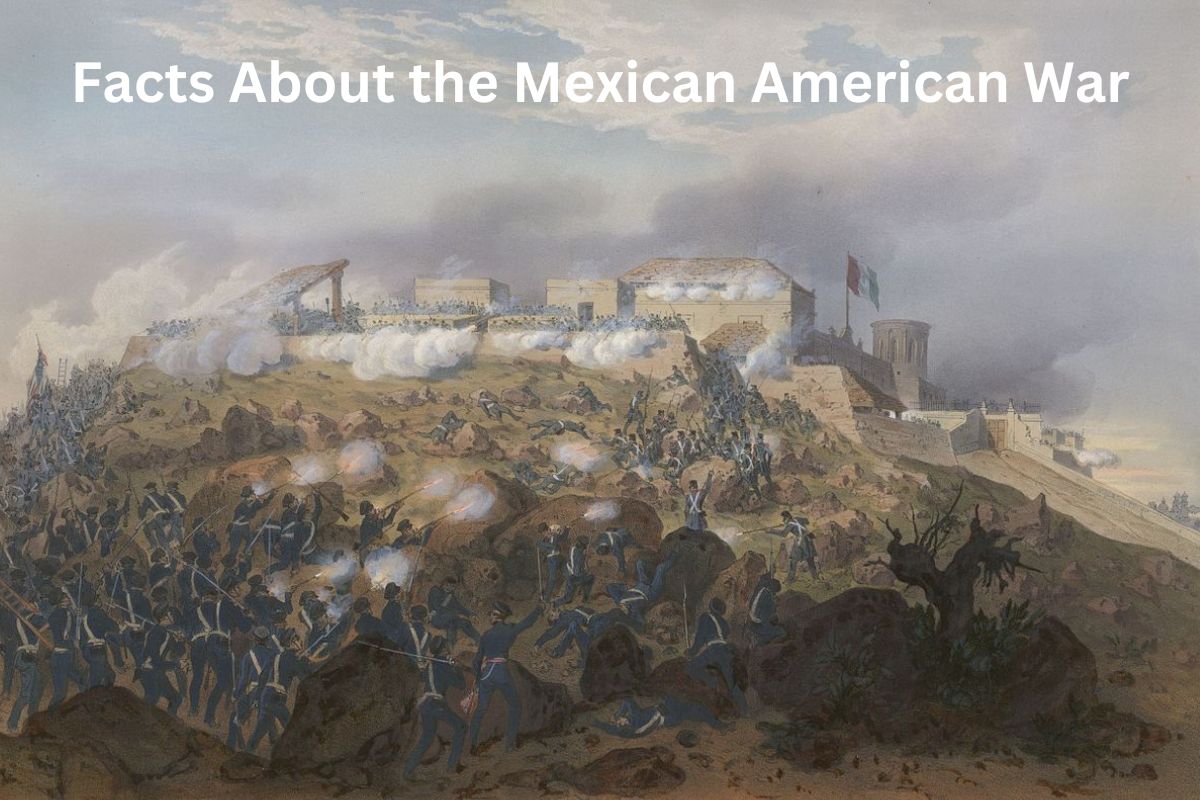The Mexican-American War was a conflict that occurred between the United States and Mexico from 1846 to 1848.
The issue of Texas, which had previously declared its independence from Mexico in 1836 and was subsequently acquired by the United States in 1845, was the primary reason that the war was waged.
Mexico did not acknowledge Texas as being a part of the United States and considered the annexation of Texas to be an act of aggression against Mexico.
During the course of the conflict, there were a number of notable engagements that took place, including:
- The Battle of Palo Alto
- The Battle of Buena Vista
- The Battle of Chapultepec.
The United States of America emerged triumphant and coerced Mexico into signing the Treaty of Guadalupe Hidalgo. This treaty gave the United States control over a significant portion of Mexico’s territory.
The war was met with strong opposition in both the United States of America and Mexico, and it had a considerable effect on the political and social landscape of both nations.
Mexican-American War Facts
1. On April 25, 1846, a skirmish took place along the Rio Grande
On April 25, 1846, a skirmish took place along the Rio Grande between a group of United States troops led by General Zachary Taylor and Mexican forces.

This skirmish marked the beginning of the Mexican-American War. The struggle was officially resolved on February 2, 1848, with the signing of the Treaty of Guadalupe Hidalgo.
Also Read: Facts About Mexico’s History
This treaty brought an end to the war and gave the United States control over a significant portion of land in Mexico.
2. Disagreement over Texas was the fundamental cause of the Mexican-American War
The disagreement over Texas was the fundamental cause of the Mexican-American War. Texas declared independence from Mexico in 1836 and obtained de facto independence following a series of battles.
Also Read: Facts About the Battle of the Alamo
Mexico, on the other hand, refused to acknowledge Texas as an independent nation, viewing it as a renegade colony. The United States seized Texas in 1845, further straining already difficult relations between the two countries.
Mexico saw the annexation as an act of aggression by the United States, and tensions reached a boiling point.
3. President James K. Polk was in office during the Mexican-American War
Although President James K. Polk was in office during the Mexican-American War and was the one who gave the order for US forces to enter the contested border region, he did not serve in any capacity as a military leader throughout the fight.

The United States Army was led by a number of leaders, the most notable of which were Generals Zachary Taylor and Winfield Scott.
4. The Mexican side of the conflict, the leadership of the armed forces was fragmented
President Mariano Paredes held power for a short while in 1846 but did not have a substantial impact on the outcome of the war.
Also Read: Battle of San Jacinto Facts
On the Mexican side of the conflict, the leadership of the armed forces was fragmented, with different generals commanding different armies in different locations.
Antonio López de Santa Anna, who had previously served as president of Mexico, was also among the most renowned Mexican generals during the conflict.
5. The United States won the Mexican-American War, forcing Mexico to sign the Treaty of Guadalupe Hidalgo
The United States won the Mexican-American War, forcing Mexico to sign the Treaty of Guadalupe Hidalgo on February 2, 1848.
The treaty acknowledged Texas as a state of the United States and gave a considerable portion of territory to the US, including California, Nevada, Utah, Arizona, New Mexico, and portions of Colorado, Wyoming, Kansas, and Oklahoma.
Also Read: Timeline of US Wars
In exchange, the US paid Mexico $15 million and agreed to accept responsibility for any claims made by American citizens against the Mexican government. The pact effectively ended the war and marked a considerable increase in US territory.
6. The Mexican-American War was a contentious struggle in the United States
The Mexican-American War was a contentious struggle in the United States, with many people opposing it for a variety of reasons.
Some opponents of the war considered it as an unjust attack against Mexico, while others saw it as a Southern slave owners’ attempt to expand the system of slavery into other regions.
Abraham Lincoln, who would later become president, and Henry David Thoreau, a noted writer and philosopher, were among many who opposed the war.
In protest of the war, Thoreau famously refused to pay his taxes and was temporarily imprisoned as a result.
While many Americans backed the war, seeing it as an essential expansion of American territory, there was also a substantial opposition movement that denounced the war.
7. Many Mexicans were opposed to the war too
Many Mexicans were opposed to the government’s choice to confront the United States during the Mexican-American War. At the time, Mexico was dealing with a lot of internal concerns, including political instability and economic hardships, and many Mexicans considered the conflict as a distraction from these issues.
Furthermore, many Mexicans were opposed to the loss of territory as a result of the conflict, believing that their country had been treated unfairly. For Mexico, the war was a difficult and costly battle that had a considerable influence on the country’s economic and political stability.
While some Mexicans backed the war effort, there was a sizable opposition movement that denounced the government’s decision to confront the US.
8. The Mexican-American War marked the first time the US waged a war on foreign soil
The Mexican-American War marked the first time the US waged a war on foreign soil. Prior to the Mexican-American War, the United States had been involved in a number of conflicts, including the War of 1812 and the Indian Wars, but these hostilities had occurred within the borders of the United States or its possessions.
The Mexican-American War was the first time the United States fought a war on foreign soil, which was a momentous event in the country’s history.
The experience of waging a war in another country would have a long-term impact on the United States, as the country would go on to participate in a number of foreign conflicts in the years that followed.
9. Many generals led the United States Army during the Mexican-American War
Many generals led the United States Army during the Mexican-American War, notably Zachary Taylor and Winfield Scott.
Zachary Taylor, a War of 1812 and Second Seminole War hero, was assigned command of US forces in Texas and played an important part in the war’s early battles, notably the Battle of Palo Alto and the Battle of Buena Vista.
Winfield Scott, a veteran of the War of 1812 and the Black Hawk War, was later named commander-in-chief of the United States Army and oversaw the campaign against Mexico City, including the Battle of Chapultepec.
Both generals played critical roles in the war effort and were crucial in the US triumph over Mexico.
10. The Mexican-American War saw several famous battles
The Mexican-American War saw several famous battles, including:
- The Battle of Palo Alto: This was the first major battle of the war, fought on May 8, 1846. It was a victory for the United States and marked the beginning of the campaign in Texas.
- The Battle of Buena Vista: Fought on February 22 and 23, 1847, this battle was a significant victory for the United States and is considered one of the most important battles of the war.
- The Battle of Chapultepec: Fought on September 13, 1847, this battle was a key engagement in the campaign to capture Mexico City. It was a victory for the United States and led to the eventual capture of the city.
Other notable battles of the war include the Siege of Veracruz, the Battle of Contreras, and the Battle of Molino del Rey. These battles were all significant engagements that played a role in the ultimate outcome of the war.
11. The precise number of casualties in the Mexican-American War is unknown
The precise number of casualties in the Mexican-American War is unknown, however it is estimated that 13,000 American soldiers and 25,000 Mexican soldiers died throughout the fight. These figures include combat deaths as well as deaths from sickness and other causes.
For both sides, the war was a terrible and costly fight, and the loss of life was a tragedy for many families and towns. The large number of losses reflected the ferocity of the combat and the difficulties that both troops confronted in rugged and unfamiliar terrain.
